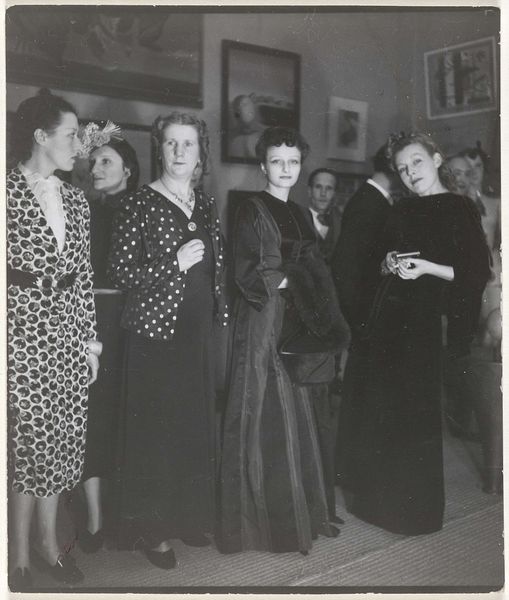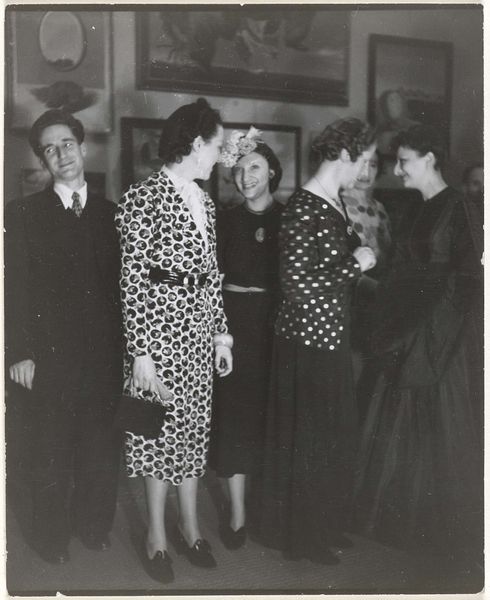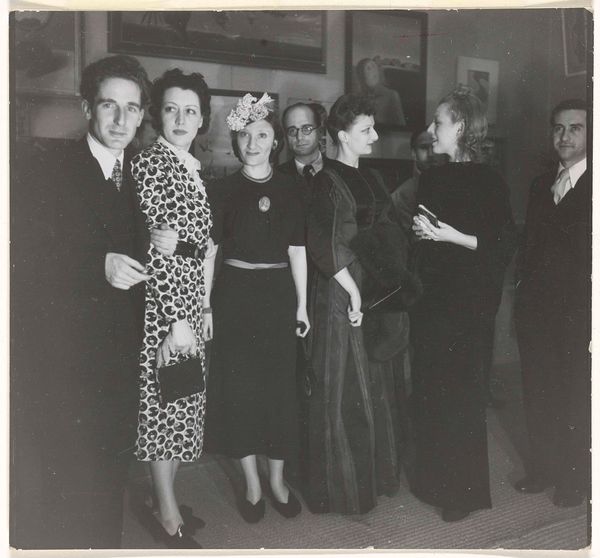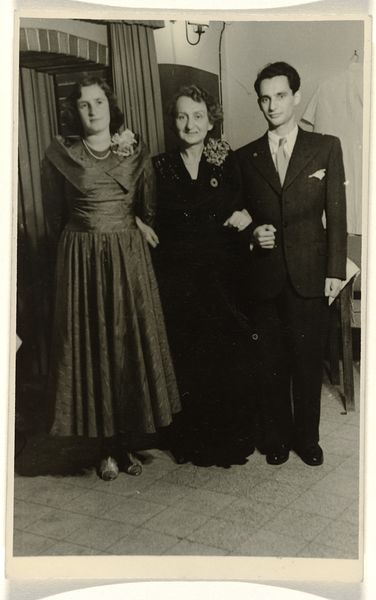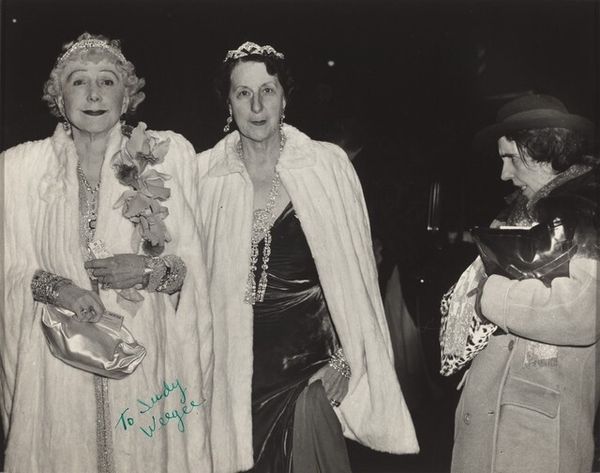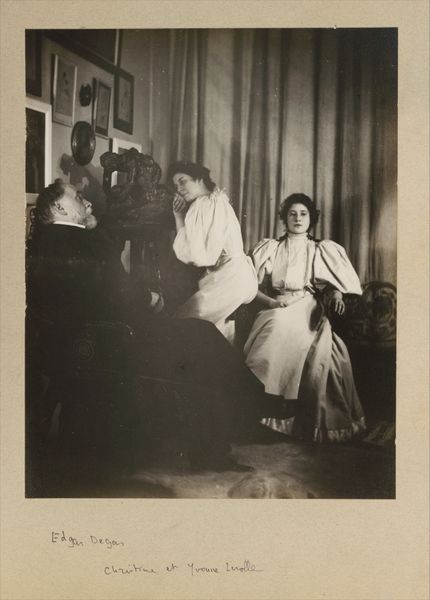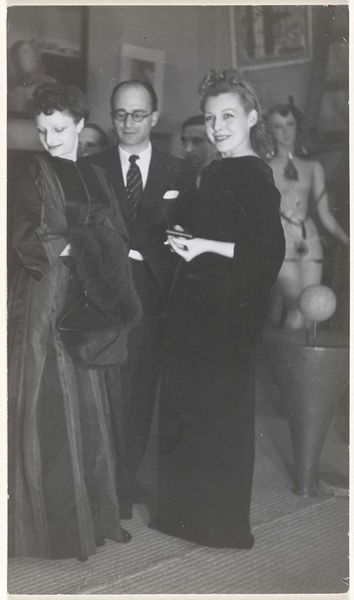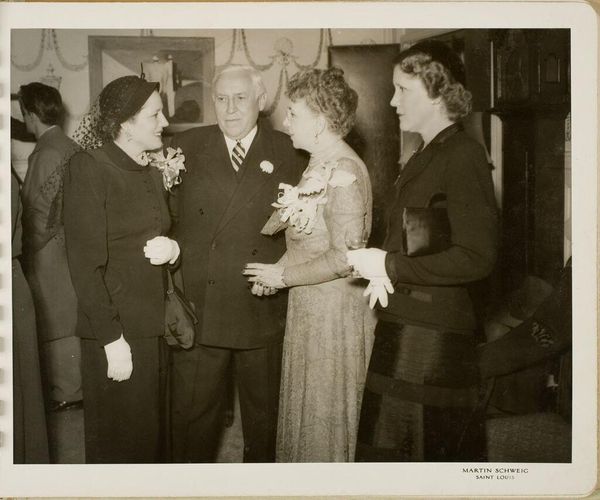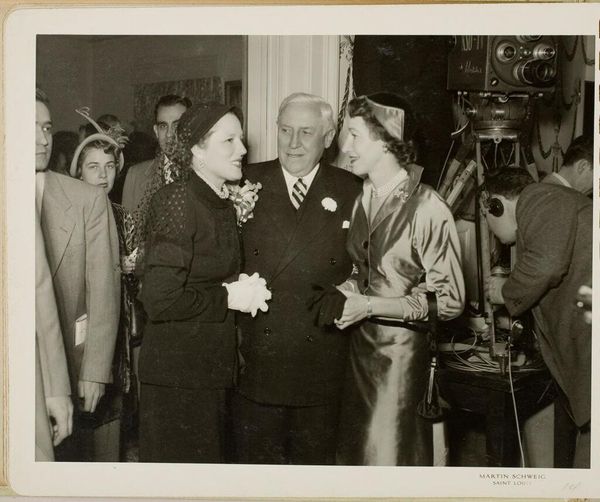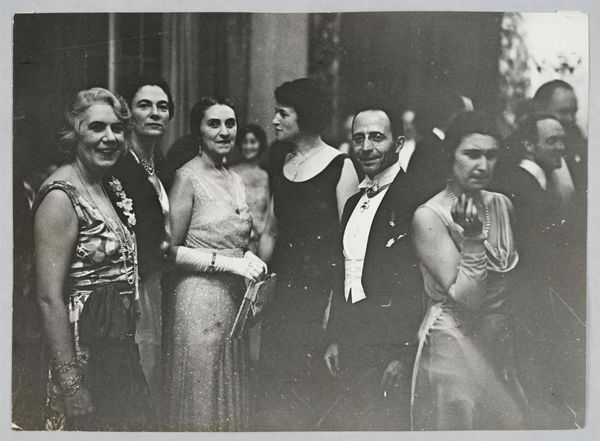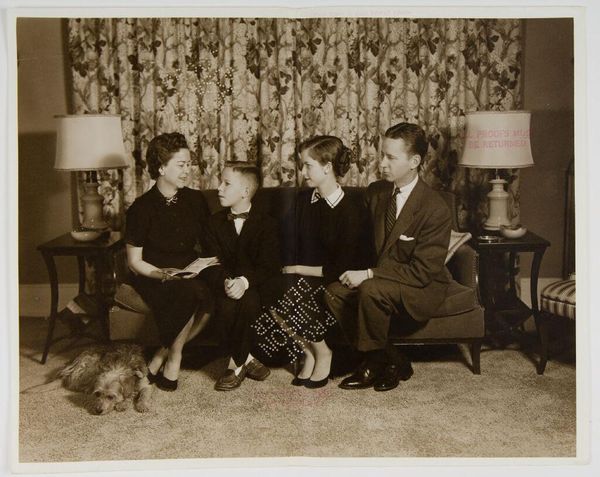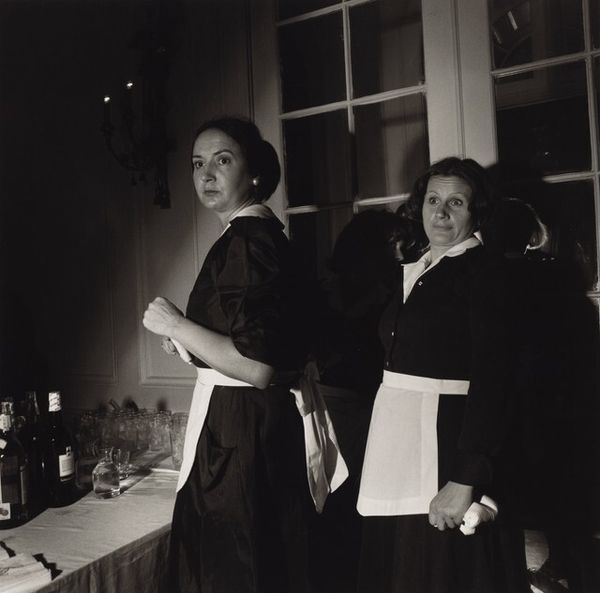
Bezoekers van opening surrealisme-tentoonstellijg Galerie Robert Amsterdam 1938 1938
0:00
0:00
Dimensions: height 117 mm, width 135 mm
Copyright: Rijks Museum: Open Domain
Editor: This is a gelatin-silver print photograph from 1938, titled "Bezoekers van opening surrealisme-tentoonstellijg Galerie Robert Amsterdam 1938." It captures people attending the opening of a Surrealism exhibition. There's almost a somber, formal mood. What do you see when you look at this image? Curator: I see a powerful glimpse into the social and intellectual circles surrounding Surrealism in Amsterdam just before the outbreak of World War II. The photograph, in its starkness, speaks to a tension between the avant-garde and the looming political realities of the time. Who has access to this ‘avant garde’? Who is excluded? How do these figures reflect or resist dominant cultural norms of gender, class, and power? Editor: That's a really interesting point – the accessibility question. The attendees seem very formally dressed, even for an art opening. Curator: Exactly. Consider the clothing as a code. The formality, in the face of Surrealism's challenge to convention, could represent an attempt to legitimize this radical movement within established society. How does the act of documenting this event—transforming a 'happening' into a historical record—further influence that negotiation? And does this 'performance' change based on who is behind the camera? Editor: So the photo itself becomes part of the Surrealist project, maybe even commenting on its own role in shaping perceptions? Curator: Precisely! The very act of capturing and preserving this moment invites us to question whose perspectives are being recorded and remembered and preserved. Consider how different this image would be if it was captured by someone with different racial or gender identitites. Editor: I never considered the photo itself as such a layered statement. I am so used to seeing the final artwork but not considering all the ways access plays a roll in cultural perceptions. Curator: And by extension, prompts us to critically examine the power structures that dictate whose stories get told, and how. We must ask: whose surrealism is this? Editor: That's really changed how I see the photograph; I'm now thinking about it less as a simple snapshot and more as a complex historical and social document.
Comments
No comments
Be the first to comment and join the conversation on the ultimate creative platform.
